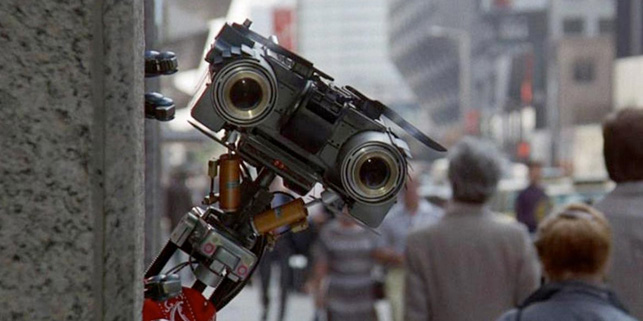Artificial intelligence has been talked about for decades, but we have yet to see true AI emerge from science fiction. But that’s not stopping a bunch of folks claiming their tools feature it. Beware the snake oil, says Al Dean

Johnny Five: If artifical intelligence is this annoying, maybe we’ll just skip it, eh? (Image courtesy of TriStar Pictures)
If you’ve been following the technology world lately, you’ll notice that artificial intelligence (AI) is talked about more and more: portents of doom from one side of the camp and proclamations of ‘the future is here’ from the other side.
The reality, as usual, lies somewhere in the middle. The ability to have a machine making ‘intelligent’ decisions (and acting on the results of those decisions) is something that could be both incredibly beneficial to humankind and truly bring about our extinction.
If you think that’s a little melodramatic, I’d strongly suggest reading the opening chapters of Mark Tegmark’s Life 3.0. It will open your mind to how things could extrapolate and get out of hand. But this is all in the future. What we have now is a collection of machine learning technologies, and it’s worth discussing the differences between machine learning and AI.
Machine learning is where a system is able to learn from repetition and eventually start to make intelligent decisions, based on the limited set of data to which it is exposed.
In the world in which DEVELOP3D lives, an excellent example of this is a rendering technology called denoising.
Essentially, this is a system that has been exposed to enough sets of partially complete renders and matching final renders that it is able to quick guess what the end results will look like, so get you to the end result in much quicker time.
Artificial intelligence, on the other hand, refers to a much wider set of technologies, encompassing a wide range of research and development work.
This gets confusing, because machine learning is, essentially, a subset of AI.
AI’s scope is amorphous and depends on definitions and whose work you are interested in. In short, it’s complicated.
So why are software vendors in the design and engineering space claiming to include AI in their toolsets? There’s a lot of those claims around at the moment, particularly when it comes to things like geometry and topology optimisation.
I’ve seen vendors claim that their system is built on AI, but the reality is that it’s using 20-year-old topology optimisation algorithms.
That’s not AI, that’s not even machine learning. It’s maths, physics and geometry wrangling – end of story.
Imagine a system that can phone up your suppliers and have meaningful conversations to book in quotes and negotiate on your behalf, so you can quickly gain an understanding of costs
So what could true AI do for the design and engineering community? Imagine not having to do all of the donkey work on a drawing. Instead, you’d tell your system what tolerances you need to work to and have it automatically work out how best to dimension and document your designs.
Imagine not having to once again work out the best gating positions for your injection-moulded parts – and having your system build your mould tool designs based on best practice and prior experience, then sending you a little annotated model that shows where it might be useful to tweak the design to reduce the cycle time by half a second.
Imagine a system that can phone up your suppliers and have meaningful conversations to book in quotes and negotiate on your behalf, so that you can quickly gain an understanding of costs. These are the types of things that true AI could deliver in the future: interaction with your data, combined with intelligence search and thought, as well as the ability to communicate autonomously with other systems and humans.
What AI most definitely isn’t, however, is a cue for some vendor to flog you yet another release of its CAD software, just because someone in that organisation has finally decided that there’s good money to be made in topology optimisation.






